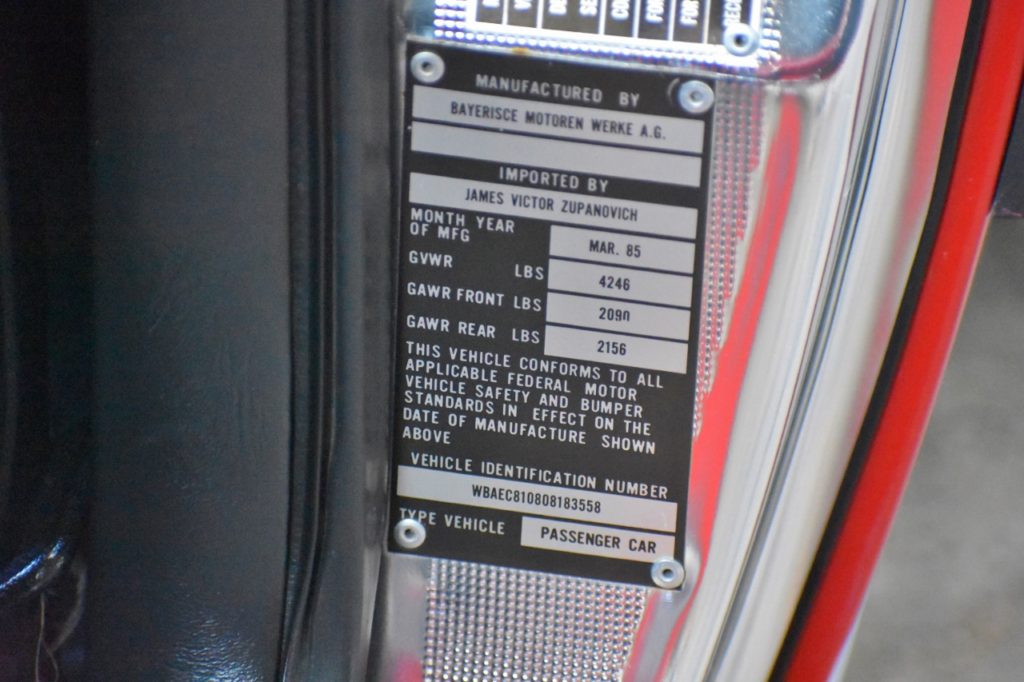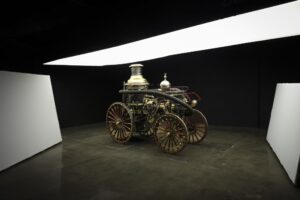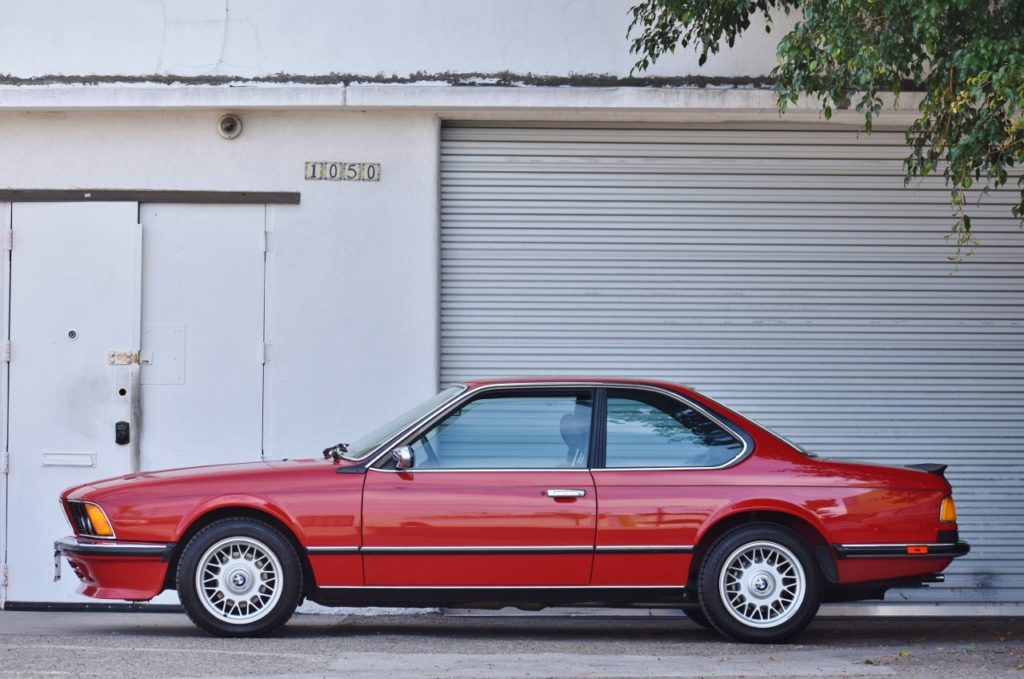
Sold – $23,635 (Plus Fees)
Concluding its tour of service in 1975, BMW’s E9 platform was decommissioned and its replacement, the E24 began rolling off assembly lines. The direct successor to the E9, the E24 aimed to update the series for a new decade while resolving a longstanding issue with its predecessor, which was cabin entry height. The proposed solution was to adjust the roofline upward for easier ingress. Thankfully, however, the decision was scrapped, and new designs that still strongly resembled the beautiful E9 were retained. Evidence of this semblance to its ancestor can be found mainly in the side window profile’s blacked-out B-pillar, in the angular front fascia, and the low-slung body lines.
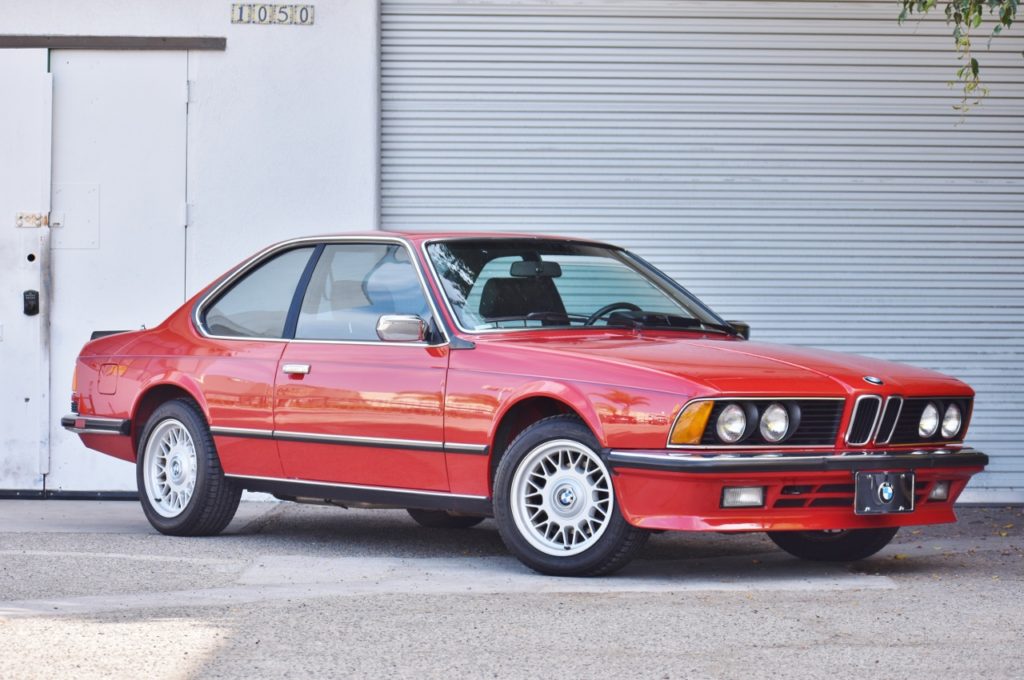
Currently on auction now, we have just such an example of a European market 635CSi from 1985! Imported new to the U.S. that year, the 635’s door panel has the proper Bureau of Automotive Repair (BAR) sticker guaranteeing that it met California emissions equipment requirements for importation. Adjacent to the BAR sticker is the automobile importation certification plaque with the original importer’s name, import date (March 1985), and vehicle information. The total number of previous owners is unknown, but for the past five years, the current owner has done a great job preserving the nearly all-original BMW.
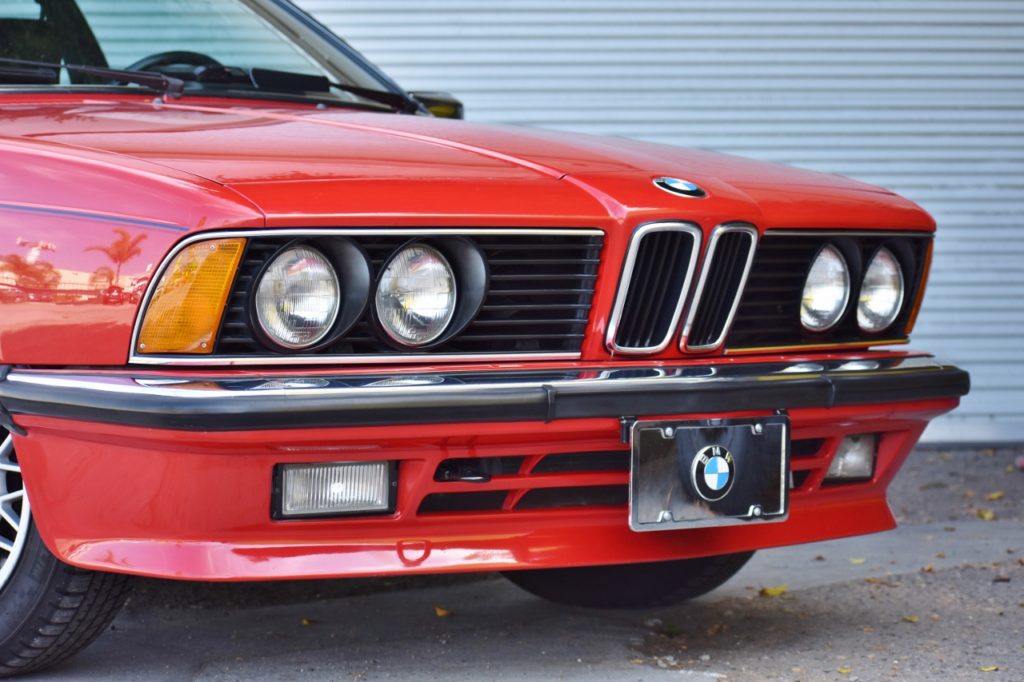
After its debut, the E24 sold well becoming a popular grand tourer around the world. Then, in 1982 BMW introduced a group of aesthetic, engine, and suspension refreshments designed to bring the 6-series’ style and performance back in line with their newest 5-series (E28). Particularly noticeable is the front fascia’s chin spoiler which was revised to include fog lights. Coinciding with the front bumper, this example was happily, not fitted with the uglier, thicker U.S. mandated impact bumpers that standard importation BMW’s were required to have at the time. Instead, it retains the sleek, chrome-trimmed front and rear European versions. Small reflective side markers are also integrated into the trim leading to the rear bumper.
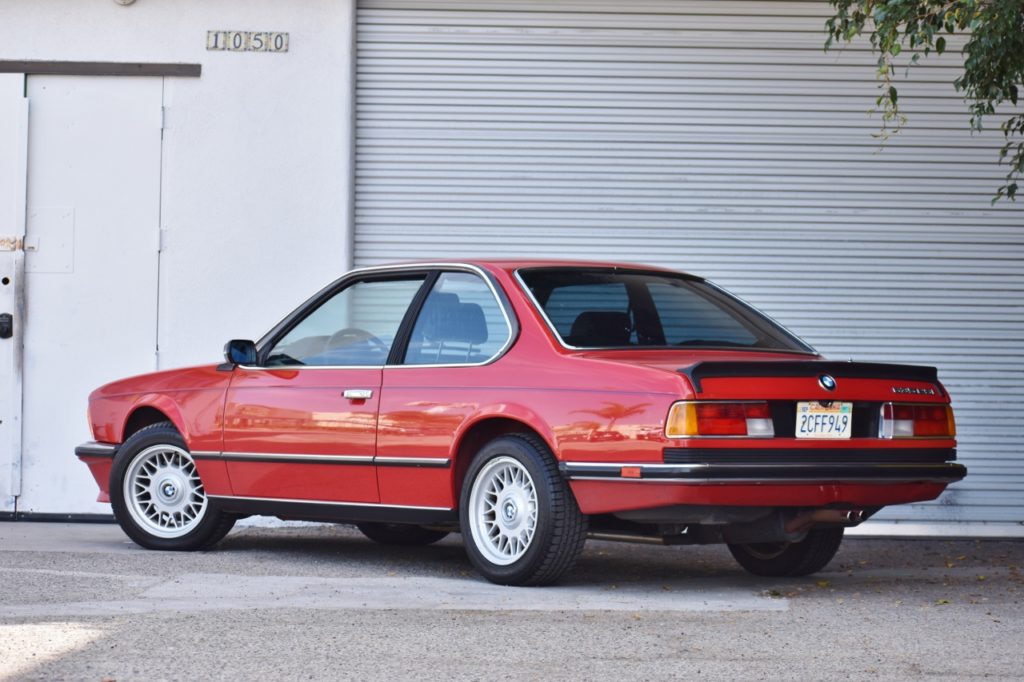
Outside, the paint finish is eye-catching Zinnobarot (Cinnabar Red) with chrome accent trim work around the windows, grills, and lighting. The side mirrors, developed specifically for the 6-series to reduce aerodynamic drag, are also capped with matching chrome covers. The seller informs us that above the left grill is a ding in the bodywork, and the driver’s foglight lens is cracked. Further cultivating a smooth aerodynamic profile, this 6-series featured a subtle black rubber spoiler on the trunk lid that BMW designed to reduce lift and help performance effectively. The original factory-supplied wheels have been replaced with 16” BMW Style 8 alloy wheels that currently wear new (2017) Michelin Pilot Sport A/S 3 tires.
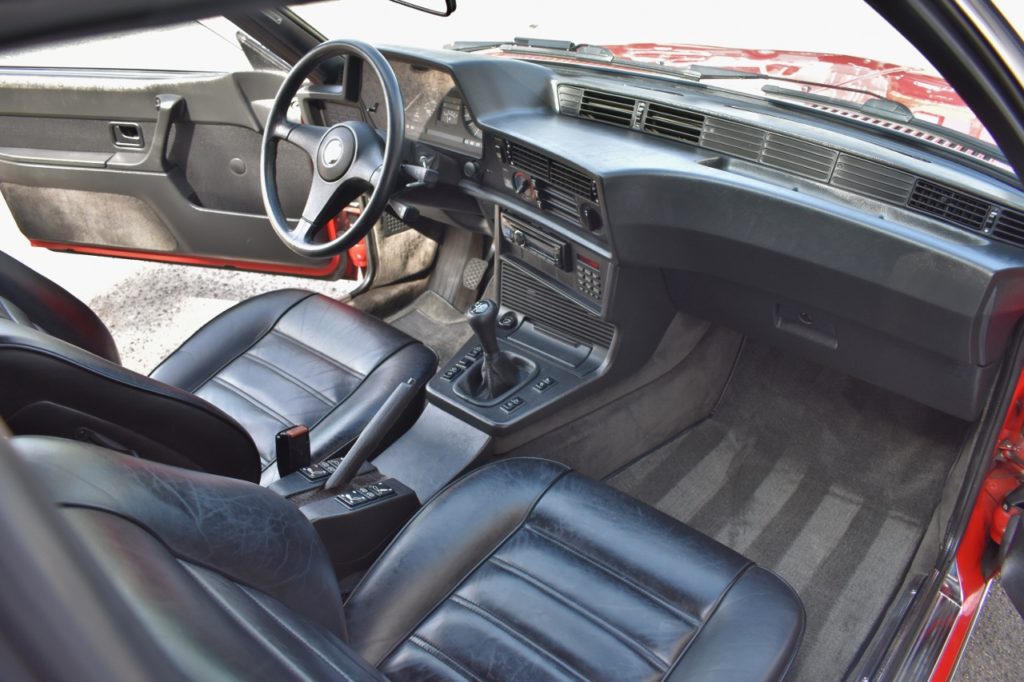
Some of the most considerable revisions to the 6-series came inside the cabin. Black leather and plastics match the carpeting that covers the interior and BMW branded front floor mats accompany the sale. Revisions to the interior include a sporty three-spoke steering wheel capped with the BMW roundel and leather-wrapped shift knob. A driver-angled center console makes it easy to adjust the aftermarket radio, onboard trip computer, and air conditioning system. To the left of the steering wheel is an illuminated equipment test panel that functions as intended.
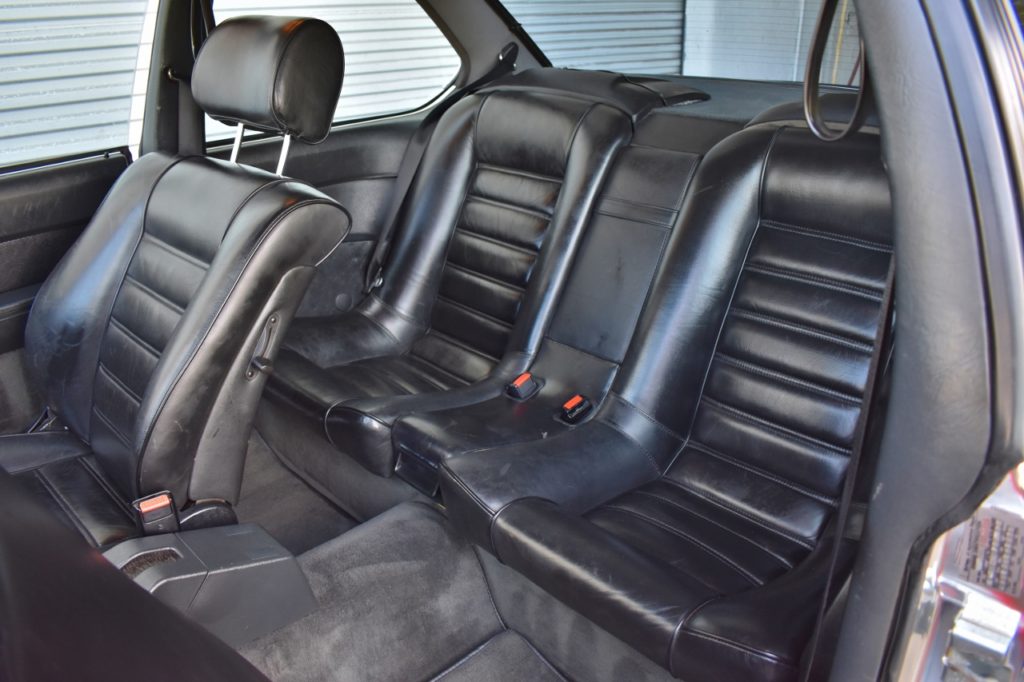
Both front seats give passengers electronic control of seating and headrest adjustments via push-buttons behind the plastic handbrake in the center console. The leather covering the front seats survives in excellent condition without visible cracks or wear marks. Designed as a 2+2, the 6-series offers rear passengers a pair of reclined bucket seats that, in this example, show signs of minimal use. Power windows and power mirrors were provided as standard equipment for all 6-series and these function well. Behind the steering wheel sits a U.S.-market VDO instrument cluster presenting drivers with a 160-mph speedometer and odometer with over 91,000 registered miles, a tachometer with 6300-rpm redline with built-in fuel efficiency meter, and a lighted engine oil life bar sits between the fuel level and coolant temperature gauges.
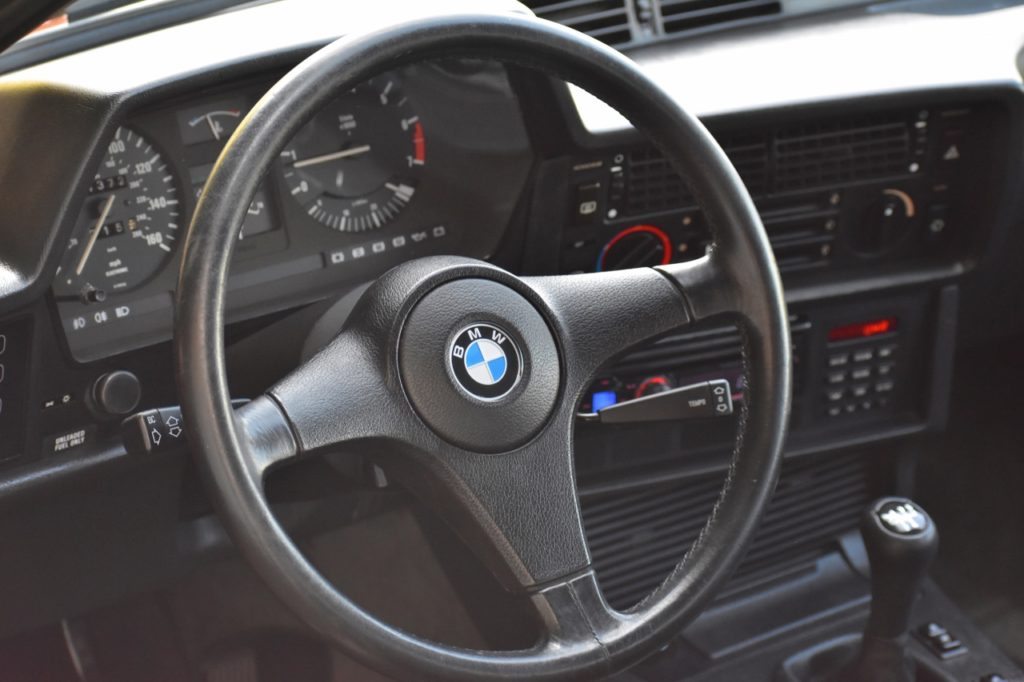
The Bosch Motronic fuel-injected 3.5-liter straight-six engine also went under the knife in 1982, coming out with a longer stroke and smaller bore that now provided 219 horsepower with 229 lbs-ft of torque. Aside from a Dinan performance chip and a K&N reusable air filter, no alterations have been made to the motor. However, fresh engine mounts and a new valve cover gasket were installed in 2017. Sending power to the rear wheels is a transplanted five-speed manual transmission that replaced the original four-speed automatic transmission, although the time of that swap is not known. At the time of that servicing in 2017, the manual transmission received a new mount, a new clutch kit, and hydraulic cylinders.
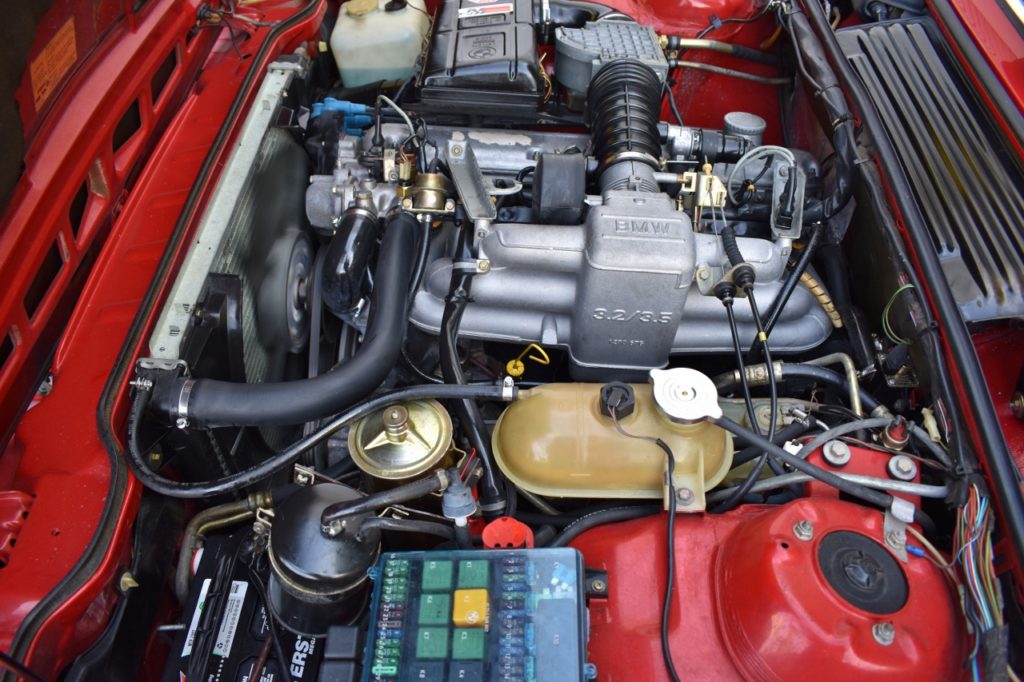
Complete with a pair of anti-sway bars the MacPherson front suspension with lower control arms is complemented by an independent semi-trailing arm rear suspension that was geometrically revised in 1982. Coupled with a recirculating ball power steering system, the 635CSi guarantees responsive, exciting handling with smooth ride characteristics. Four-wheel disc brakes are provided as standard equipment, and they feel powerfully-matched to the engine performance.
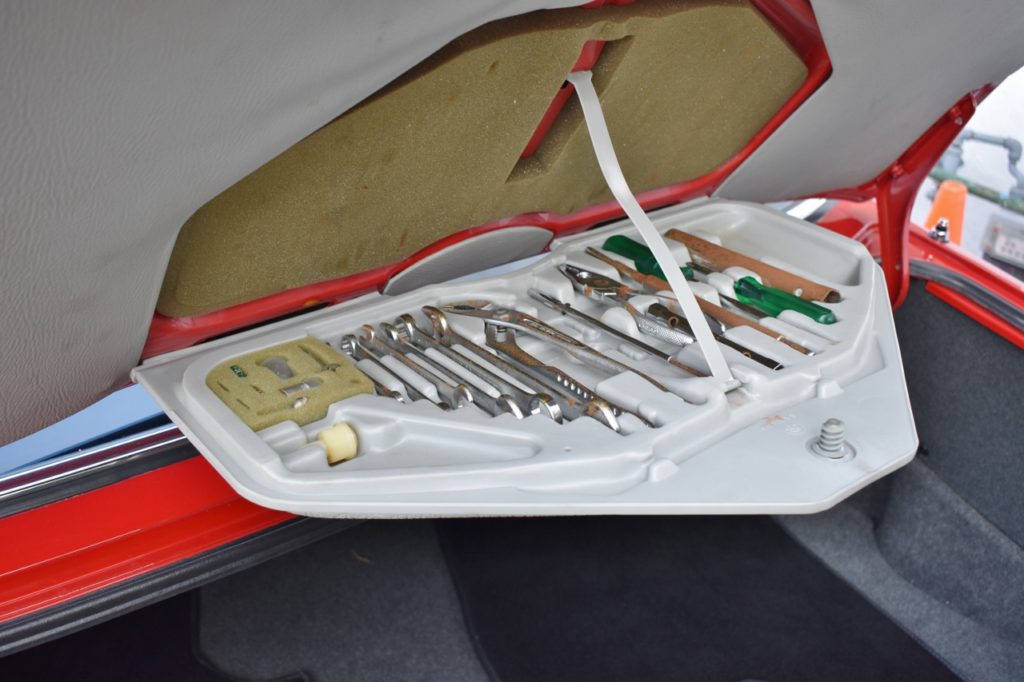
The original tool kit is still secured in the trunk compartment with nearly every component. Underneath of the trunk’s floorboard is the factory spare tire. Carfax reporting begins in 1990 at 35,000-miles and shows no reported accidents or damages up to its current 2016 listing. A clean California title is, of course, guaranteed with the sale, so happy bidding!
